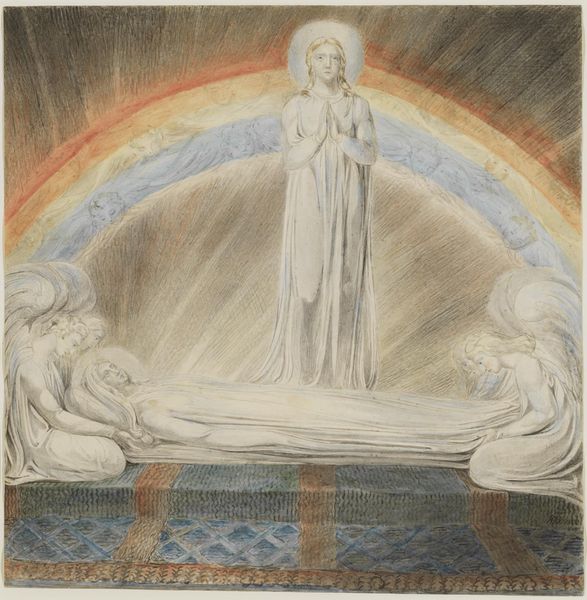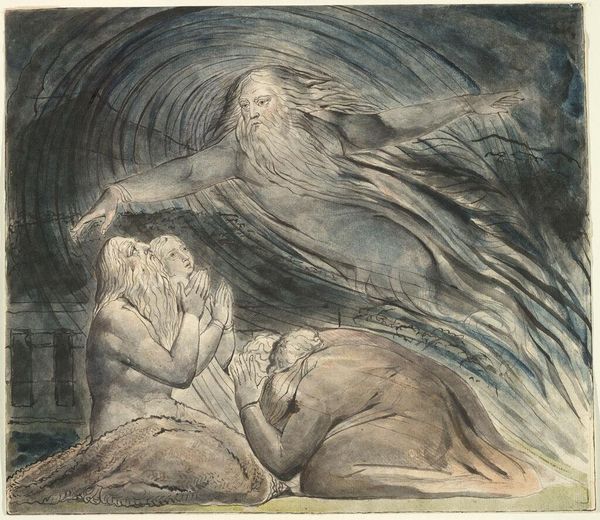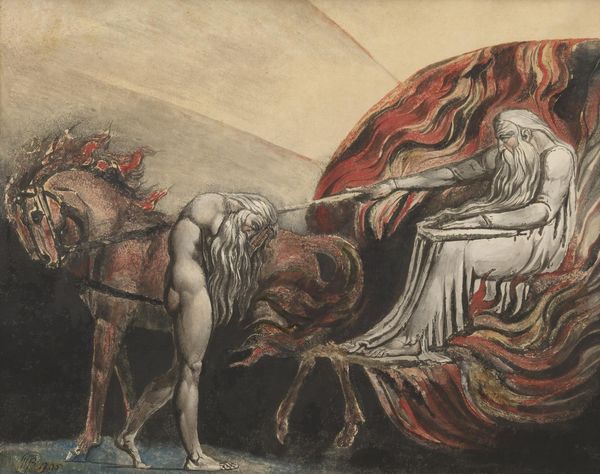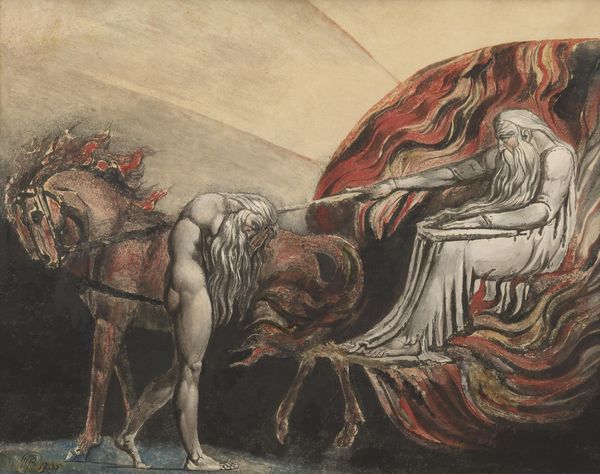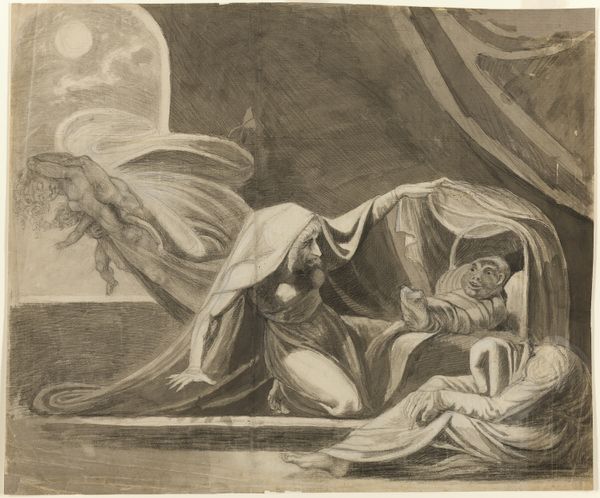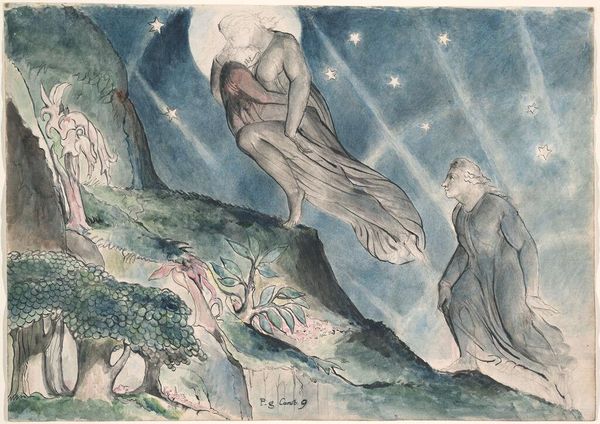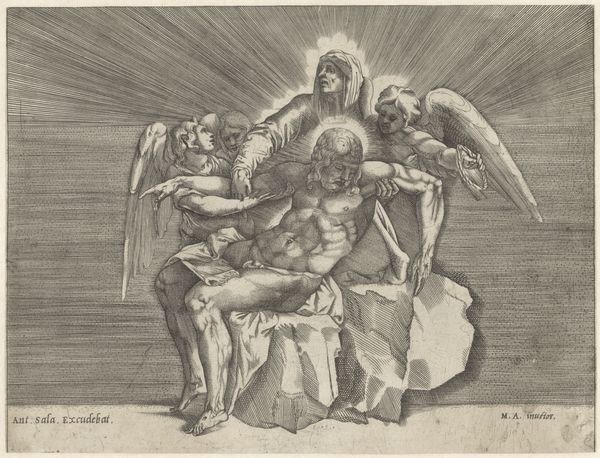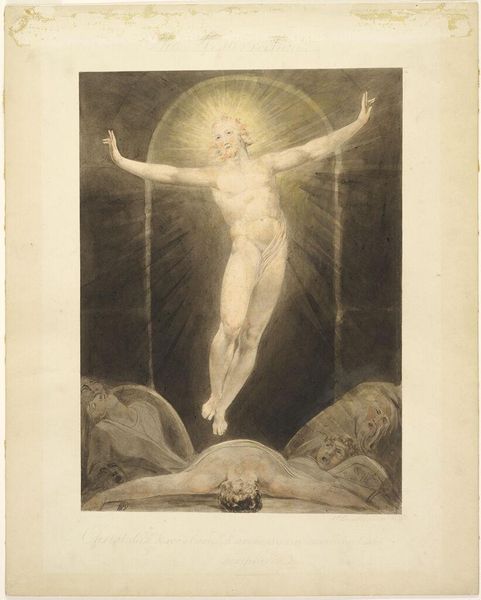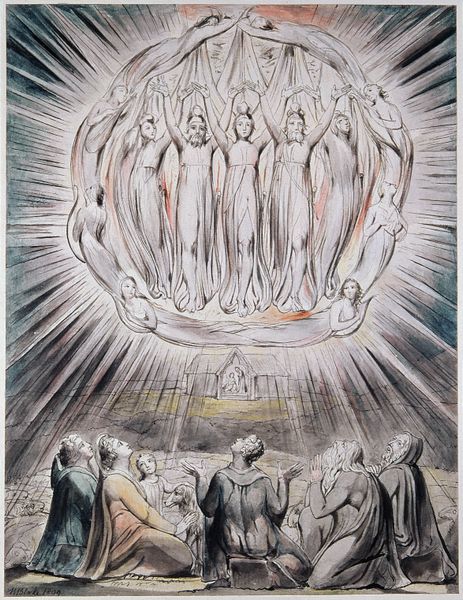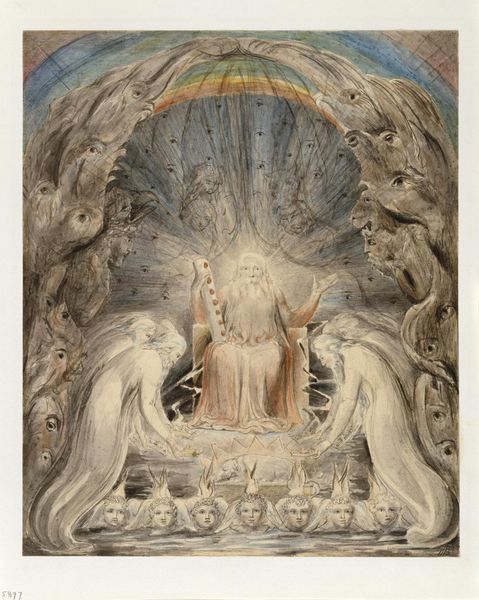
drawing, coloured-pencil, watercolor, ink
#
drawing
#
coloured-pencil
#
figuration
#
watercolor
#
ink
#
coloured pencil
#
underpainting
#
romanticism
#
pastel chalk drawing
#
watercolour illustration
#
history-painting
#
watercolor
Dimensions: overall: 37.6 x 35.4 cm (14 13/16 x 13 15/16 in.)
Copyright: National Gallery of Art: CC0 1.0
Curator: This somber drawing is William Blake's "The Death of Saint Joseph," created in 1803 using ink, watercolor, and colored pencil. My first impression is of intense light against palpable sorrow. Editor: The overall composition guides the eye upward toward the radiant angels arched overhead, in stark contrast with the heavy shadows surrounding the deathbed scene. The color palette is also remarkably delicate. Curator: Delicacy serves a profound purpose here, softening the harsh reality of death, situating the scene within the visual language of Romanticism. Blake consistently critiqued the dominant rationalism of his time through precisely these kinds of symbolic choices. Joseph is tended to by what appears to be Mary and Jesus. The inclusion of a rainbow containing seraphic faces represents, most likely, a symbol of divine mercy and salvation. Editor: Yes, there's certainly a purposeful construction. See how the radiating lines behind the figures draw the viewer into a transcendental realm beyond the earthly? Consider how Blake used these light beams to portray not only illumination, but transcendence. It visually echoes similar conventions present in Baroque paintings of heavenly ascension. It’s a sophisticated manipulation of form to inspire emotional response. Curator: It's critical to also see Blake’s radical politics woven in the imagery. His focus on the domestic sphere and the holy family suggests a democratization of spirituality. He shifts away from institutional authority to home-based devotion. This resonated with the dissenting religious movements in England at the turn of the 19th century. Blake's work, while intensely personal, tapped into larger cultural anxieties. Editor: The underdrawing also lends itself to his aesthetic vision. The visible lines add texture, and invite a consideration for what constitutes a finished or unfinished piece. Blake also printed and sold engravings; this aesthetic, as well as this piece’s existence as a “drawing” could perhaps suggest a different, but no less presentational, set of conditions. Curator: Blake's radical vision sought to redeem imagination through art, thereby challenging societal norms. Seeing "The Death of Saint Joseph" through this lens lets us connect not only with his artistic prowess but also with his social beliefs. Editor: By observing the visual interplay between color, light, and composition we can uncover and connect with Blake’s revolutionary visual project.
Comments
No comments
Be the first to comment and join the conversation on the ultimate creative platform.
